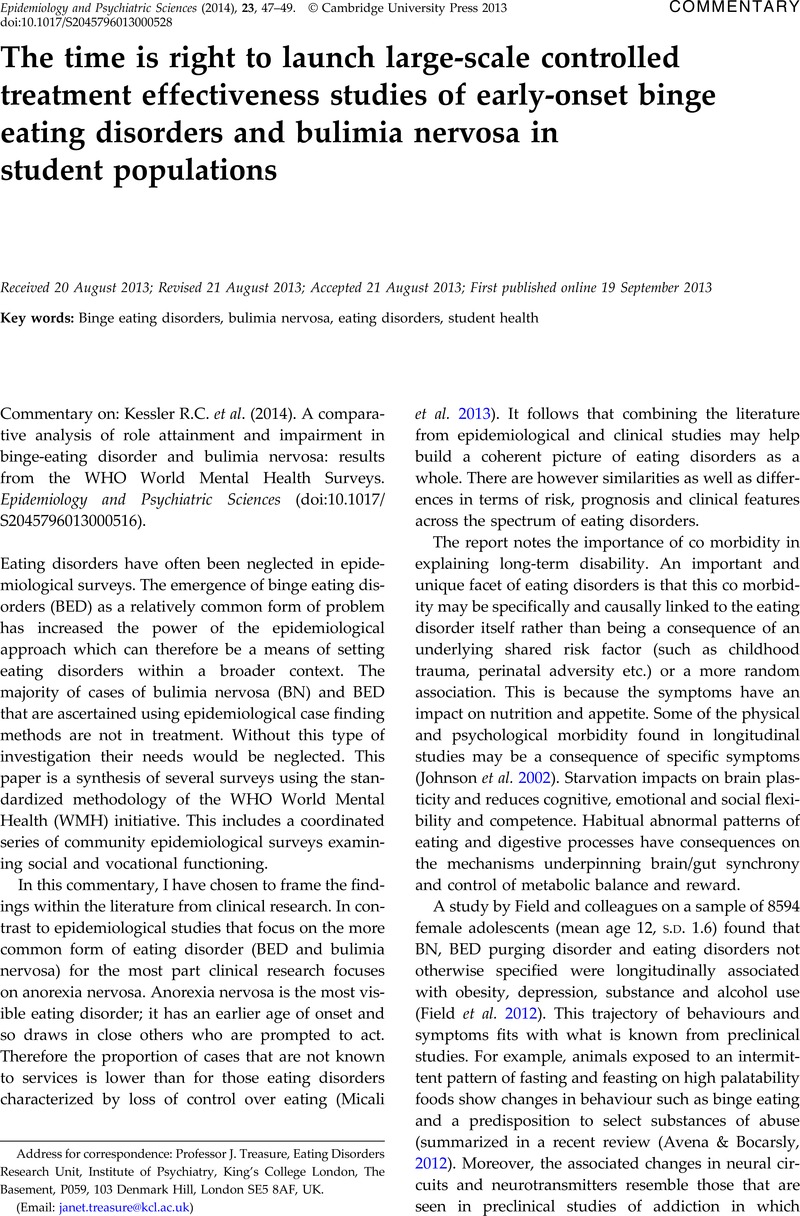Crossref Citations
This article has been cited by the following publications. This list is generated based on data provided by Crossref.
Sanchez-Armass, Omar
Raffaelli, Marcela
Andrade, Flavia Cristina Drumond
Wiley, Angela R.
Noyola, Aida Nacielli Morales
Arguelles, Alejandra Cepeda
and
Aradillas-Garcia, Celia
2017.
Validation of the SCOFF questionnaire for screening of eating disorders among Mexican university students.
Eating and Weight Disorders - Studies on Anorexia, Bulimia and Obesity,
Vol. 22,
Issue. 1,
p.
153.



